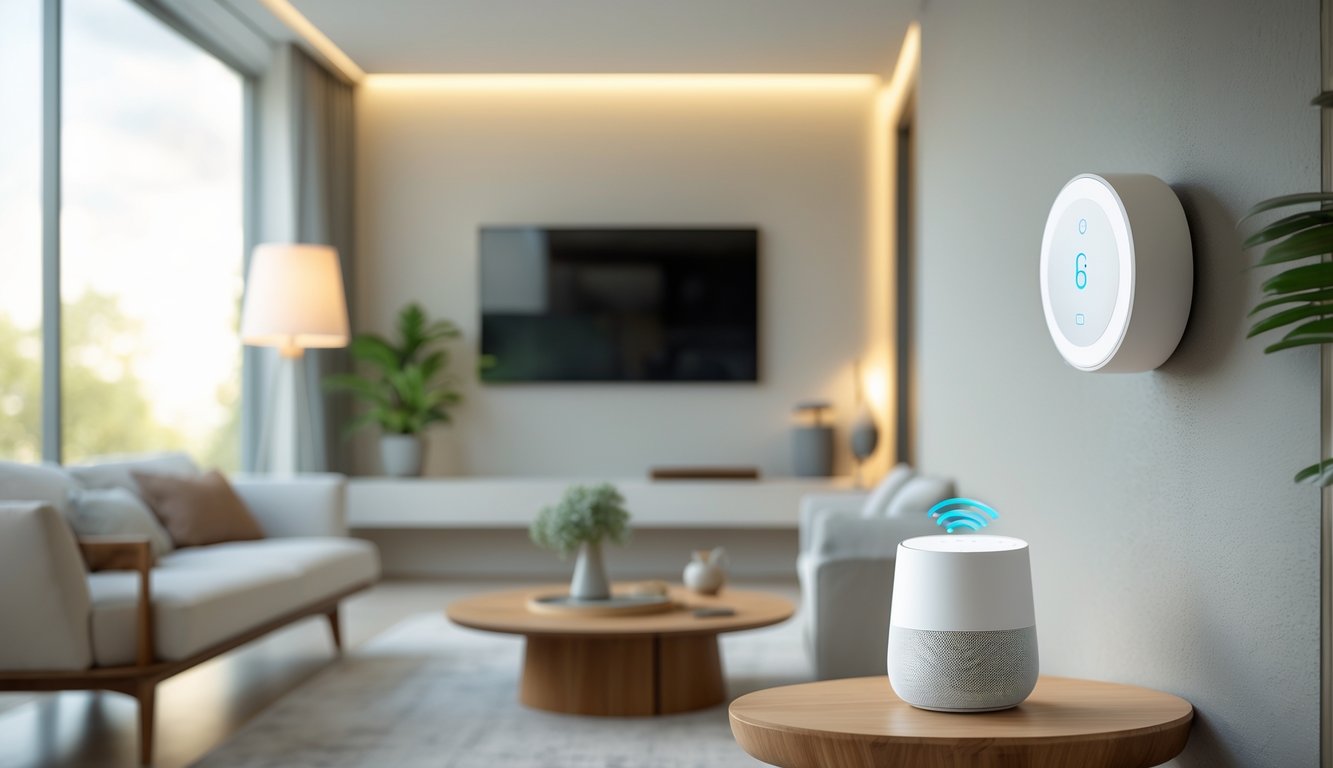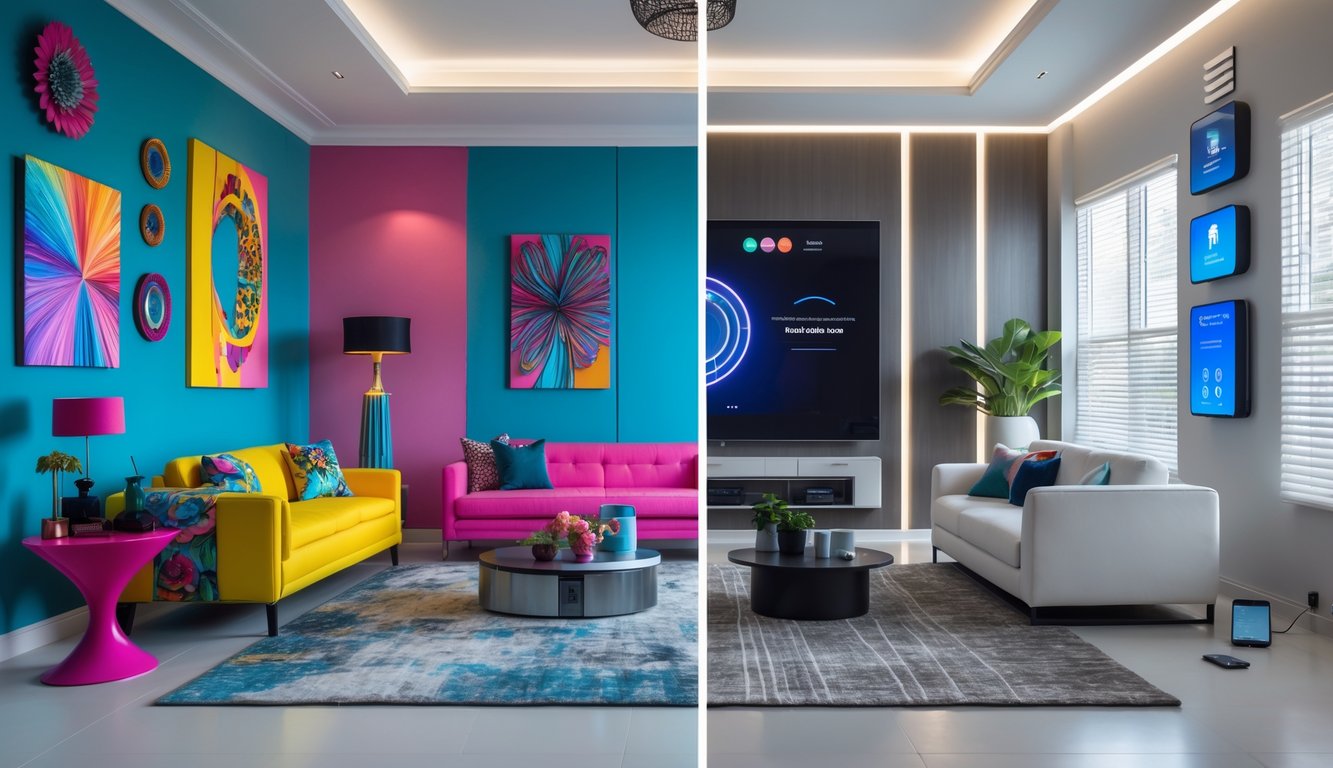
Remember the time I dropped $400 on that “statement” accent wall? Yeah, nobody cared. But the moment I installed an app-controlled thermostat, suddenly everyone wanted to talk about it. I could pile up a mountain of seasonal throw pillows and nobody blinks, but the second my lights respond to my voice—questions, every time. HGTV’s not gonna say it, but honestly, smart tech just sticks around and actually does stuff, way longer than whatever makeover is trending this month. I keep seeing these perfectly staged rooms that look amazing for about five minutes, then poof—outdated. Meanwhile, my friend’s motion-sensor blinds just do their thing as the sun moves, and that’s real comfort, not some color-of-the-year nonsense.
So Dr. Lisa Guerrero, who apparently lives and breathes building automation, says in this 2024 report that 63% of people with integrated systems are happier with their homes than folks who just slap on some new decor. I get it, though—textures are fun, hype is a drug, and I’m still a little creeped out by Wi-Fi fridges. But when someone asks me if they should buy that “iconic” lamp or get smart security, is anyone out here talking about how much time you save, or how nice it is not to fumble for a light switch in the dark? Nope. That’s never in the influencer highlight reel.
Understanding Smart Tech Integration In Modern Interiors
Nobody warns you about the day your wireless hub has a meltdown and suddenly the whole house is chaos. Still, I keep wiring up all this tech because, on the whole, it just quietly makes life easier. Stuff just works, routines disappear, and somehow, your weird playlist and favorite lighting scene actually matter more than the wallpaper you picked last year.
What Is Smart Tech Integration?
Nobody even notices a programmable thermostat anymore, but when the living room lights shift with the sunset, even my most skeptical clients stop and stare. Smart tech in design isn’t about flashy screens or the latest gadget. It’s mesh networks, sensors under the table, and half the magic is stuff guests will never even spot.
People love to call it “seamless,” but come on—Alexa’s blue ring is always glowing unless you hide her in a vase (seriously, I know someone who does this, and I still don’t get it). Real integration means you use one app—HomeKit, SmartThings, Google Home, whatever—and suddenly you’re juggling everything from locks to shades without a million remotes.
But unless you ran cables before the drywall went up (and who actually does that?), even “simple” wireless setups can turn into a troubleshooting black hole. CEDIA’s 2024 report says most people totally underestimate how much setup and updating these things need. Always at the worst possible time, too.
The Evolution Of Smart Home Technology
We started with these clunky $4000 touch panels—nobody under 40 wanted to use them. Now it’s all voice commands and $19 Wi-Fi bulbs, and everything updates so fast your head spins. I tried installing an early Nest in 2010—nightmare. By 2015, IFTTT and Philips Hue were everywhere. Now, AI, AR previews, sunrise-simulating bulbs? It’s just a blur.
Ilse Crawford (she’s a big deal in design, apparently) said in Metropolis last January that invisible tech is “as foundational as electricity or plumbing.” Not just about convenience, but now it’s the baseline for comfort. Blinds close when it’s hot, doors know your fingerprint, lights fake like you’re home when you’re not. My Roomba still chokes on throw rugs, but nothing’s perfect.
These days, the old walled-off smart home systems are fading. Open protocols like Matter and Thread are everywhere. Your Wi-Fi toaster probably talks to your alarm clock. It’s weird, but under all this, interior design is changing in ways you can’t even see.
Key Components Of Smart Home Integration
Forget neat checklists—every house is a weird mix. Smart lighting is the big one (everybody wants it, nobody understands it). Lutron Caséta, Nanoleaf, Phillips Hue—take your pick. Motion sensors disappear into the walls. Voice assistants end up running everything from music to HVAC, but for some reason nobody trusts them with ovens (yet).
Automated shades, climate controls, hidden speakers—those are the real MVPs, not the touch screens everyone shows off. Distributed audio? There’s always a hidden amp somewhere, ceiling speakers camouflaged in paint, all working until a firmware update wrecks Spotify.
Security’s a circus: Wi-Fi cameras, smart doorbells, garage door openers that ping your phone every time the raccoon shows up (true story). “Sustainable” stuff like energy tracking and occupancy sensors? Most people don’t even notice, but the bills go down. I put in a smart leak detector once and nobody touched it—until it actually saved a flooded basement. Half the value is invisible, and the headaches only show up when you’re out of town.
Outperforming Trendy Room Makeovers: A Comparison

Try getting people hyped about another “trend” when last year’s velvet sofas are already on clearance. It’s wild—while influencers push fast room makeovers, I’m over here adjusting the thermostat from my phone or just grinning when the lights dim at sunset. That’s what actually matters, right? Or am I missing something?
Beyond Surface-Level Changes
Every magazine swears wallpaper will change your life, but after years working with clients in tiny city condos, I can say most “showpiece” makeovers don’t solve anything. One client obsessed over “biophilic” wallpaper, but then wires and clutter ruined the vibe. You ever try hiding cables in a rental? Nightmare.
Hybrid work turned living rooms into Zoom studios. Smart bulbs you can boss around with Alexa, Sonos speakers buried in a shelf—those actually keep things usable, not just pretty. Forget the staged minimalism you see in ads; this stuff really does make life calmer. Dr. E. Yuen at Stanford says design should “disappear,” not fight you. AR room previews are cute until you’re buried in deadlines and just want your laptop charged without a mess of cords.